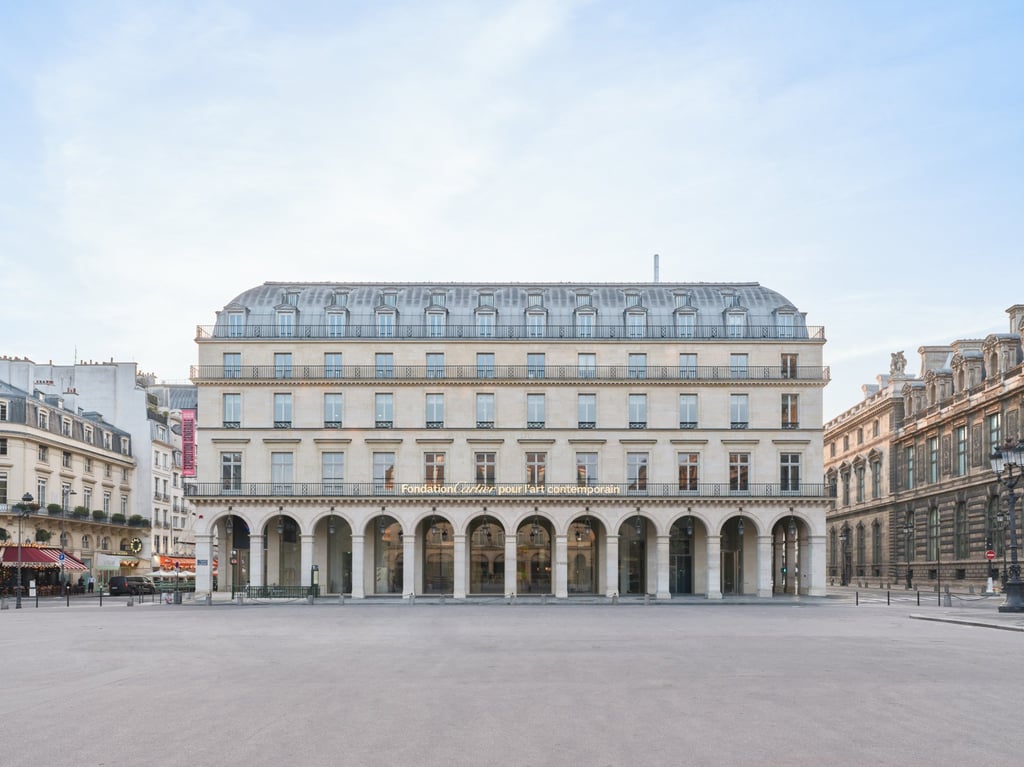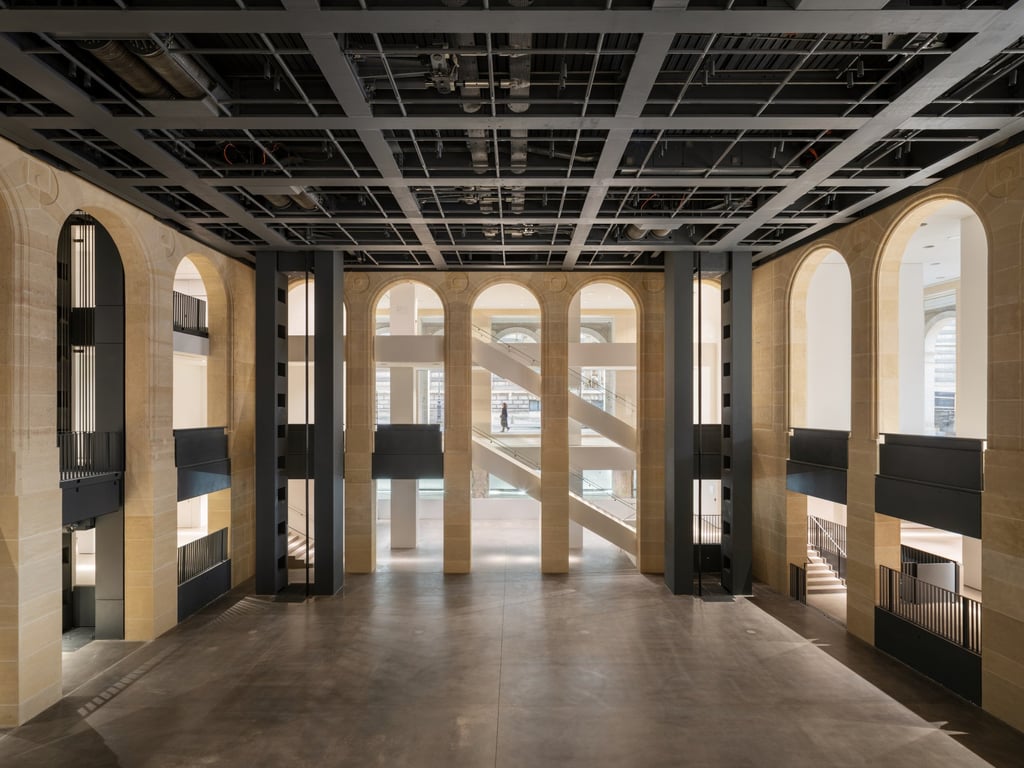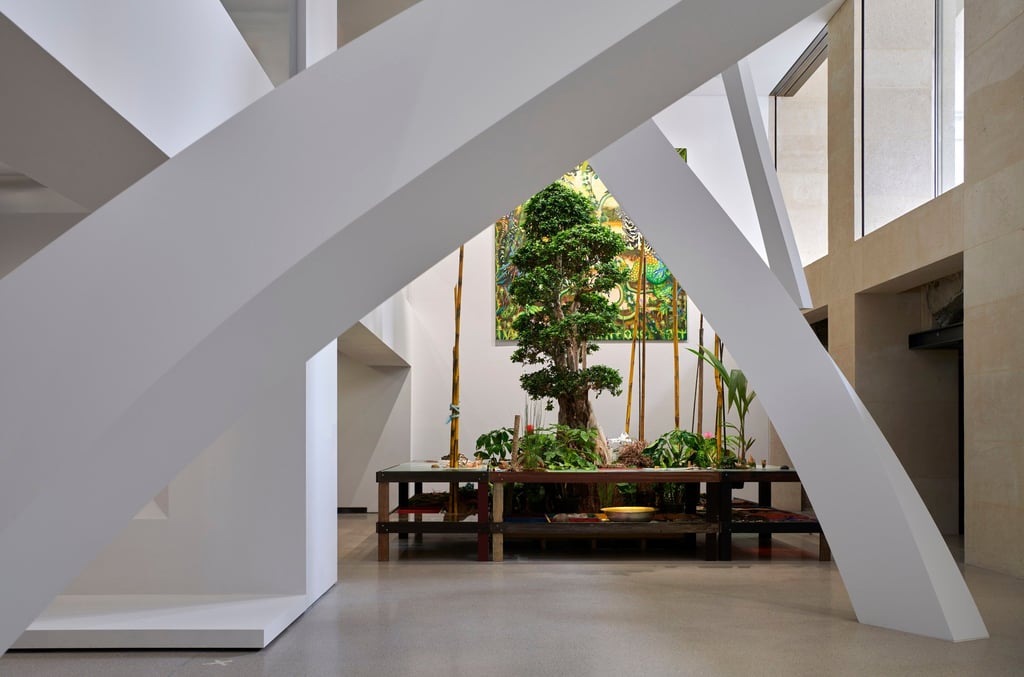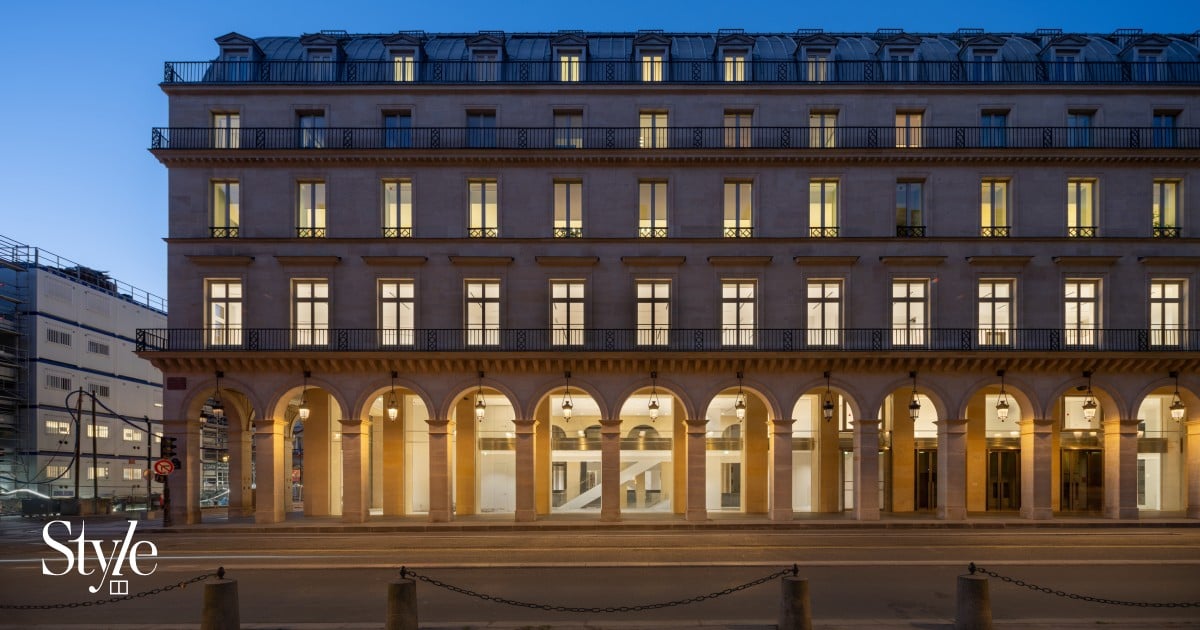When the Fondation Cartier Pour L’Art Contemporain was established in 1984, it wasn’t common for luxury houses to set up cultural entities and engage with the arts.Long before the opening of institutions such as the Fondazione Prada in Milan and the Fondation Louis Vuitton in Paris, Cartier – the jeweller and watchmaker that is part of the Richemont Group – was working with emerging artists and supporting contemporary art through the foundation. The brainchild of Alain Dominique Perrin, then president of Cartier, the museum was until recently located in a striking building designed by Jean Nouvel and situated in the 14th arrondissement of Paris. The Fondation Cartier Pour L’Art Contemporain at Place du Palais Royal in Paris. Photo: Handout
The Fondation Cartier Pour L’Art Contemporain at Place du Palais Royal in Paris. Photo: Handout
Also designed by Nouvel – the architect behind iconic buildings such as the National Museum of Qatar in Doha and the Institute du Monde Arabe in Paris – the new incarnation of the Fondation is housed in a heritage building dating back to 1855.
Nouvel introduced a groundbreaking innovation in the structure: a system of movable platforms that can be adjusted to different heights to create completely different spaces. Think of them as “floating galleries” that exist vertically across multiple floors and allow curators and exhibition designers to open up spaces or contract them depending on the artworks on display.
 A system of movable platforms allows for various uses of the space. Photo: Handout
A system of movable platforms allows for various uses of the space. Photo: Handout
For the inaugural exhibition, the curatorial team of the Fondation Cartier – led by director of collections Grazia Quaroni – identified some common threads running through the permanent collection of the foundation to conceive “Exposition Générale”. The show marks four decades of contemporary art through four sections: Machines d’Architecture, Être Nature, Making Things and Un Monde Réel. Each theme reflects topics that the foundation has explored through events, talks and performances throughout its history, ranging from utopian architecture to climate change, new materials and techniques, and science and technology.
One of the core principles of the Fondation Cartier is the importance of exhibition design, which is not just an afterthought to serve the artworks. Rather, it plays a pivotal role in the way pieces are presented. For the design of “Exposition Générale”, the foundation hired Andrea Trimarchi and Simone Farresin, the duo behind FormaFantasma, a research-based design studio behind projects such as the most recent Venice Biennale. Artworks by Junya Ishigami and Luiz Zerbini as part of the “Exposition Générale”. Photo: Handout
Artworks by Junya Ishigami and Luiz Zerbini as part of the “Exposition Générale”. Photo: Handout
“Curating an exhibition is a joyful, but also torturous process of making choices and deciding on an exhibition design,” said Béatrice Grenier, the foundation’s director of strategic projects and international programmes, during a chat on opening day. “We approached FormaFantasma because, beyond practices like product design, they also explore exhibition design as a curatorial tool in their work for museums around the world.”

